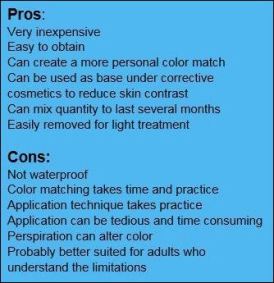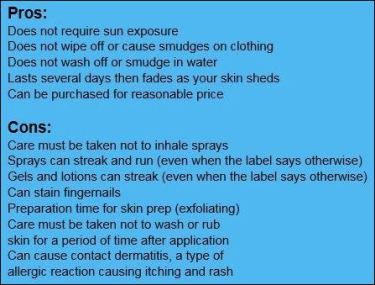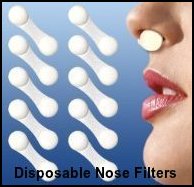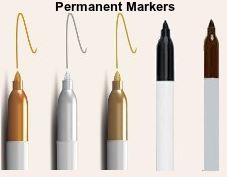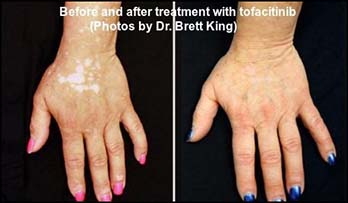| Best View is Not in Email Please Click Here Now to Read Newsletter on VSI Website |
 |
|||||||||||||||||||||||||||||||||||||||||||||||||
This Newsletter Has Been Generously Sponsored By: 
Click Above for More Information on Home Phototherapeutic Light Units for Vitiligo
|
|||||||||||||||||||||||||||||||||||||||||||||||||
|

Dear Members and Friends of VSI, While many people look forward to sharing fun times with family and friends in the summer, the opposite can be true for those with vitiligo. In an effort to disguise pigment loss, even in the heat of the summer, many subject themselves to long sleeves and/or long pants, high-necked shirts, and footwear that covers the entire foot and ankle. Others altogether forego outdoor activities they once loved. Having been diagnosed with vitiligo over 25 years ago, while I am still acutely aware of my skin, I have come a long way in accepting and coping with this disease. Though I may no longer arrange my daily activities around vitiligo, it still impacts my everyday life. What does that mean? In the early years, vitiligo not only affected my daily life, but it affected my family as well. I was no longer comfortable with my children inviting friends for sleepovers unless my husband could take care of their breakfast in the morning before I had a chance to tediously apply adequate cover-up. I no longer volunteered for early shifts in my children’s schools. For a time, I even avoided restaurants or stores where I might see someone I knew. Vitiligo was definitely in charge of my life in those days, and thankfully, that is no longer the case. There are still situations that affect my decisions and activities, but more from a planning standpoint rather than avoidance. The way I look at it, the extra time it might take me to use my light (treatment) and/or apply extra cosmetics, is not so different than the extra time it might take for a diabetic to test sugar levels and take medications, or for an asthmatic to take breathing treatments. I can handle it - I just have to prepare. It can be difficult for others to understand what you’re feeling. That’s not their fault. I wish I had a nickel for every time someone said “I don’t even see it,” or, “it’s what’s on the inside that counts.” I know - RIGHT? Even if those words don’t help, it’s important to remember that they, too, are struggling, and just want to help. Sharing your feelings with others can be very healing for you, as well as helping those around you have a better understanding of what you are going through. This also helps you establish a support system of people you can count on when you’re down. VSI is here to provide the education and support needed to empower each of you with the tools you need to take back your life. Our community forums are available to share experiences and coping strategies, and we partner with an incredible network of the world’s foremost vitiligo experts enabling us to bring you the most up-to-date information available. The bottom line is, you have to be comfortable in your own skin. It’s a process, and VSI is here to help. Let us do the heavy lifting. All we ask in return is your support to sustain our efforts. If you are not a Supporting Member, please consider becoming one today - help us help you.Sincerely,
In the Past Few Weeks:
We’ve come so far – yet we clearly have far to go. VSI has led a wide range of initiatives to increase education, awareness and support. We have fought to change the way vitiligo is addressed by the insurance industry and ensure that patients have access to care from needed specialists. Although VSI has made great progress, the organization now finds itself at a critical threshold. It lacks the financial resources needed to strengthen the organizational infrastructure, maintain staff, increase programs for members, and continue to raise awareness of vitiligo. We need your help to move the organization over this threshold and to the next level. 2015 Funding and Leadership Campaign Late last year, VSI announced a multi-initiative “Call to Action.”
The response to this campaign has been quite positive, and the momentum continues to grow. We have prepared a mid-year report to thank those who have already stepped up and joined this critically important campaign. Please – Help Us Help You! Mid-Year Campaign Results Are In! To Learn More About How VSI Uses Your Contributions: Click Here Show Your Support Today and
The PanAmerican Society of Pigment Cell Research (PASPCR) will be offering a unique meeting opportunity this year. In advance of their 2015 Scientific Conference Advances in Vitiligo Research and Care, and in collaboration with the Vitiligo Working Group and Vitiligo Support International, they are holding a “Vitiligo Pre-Meeting” designed to bring vitiligo patients, their doctors, and researchers who specialize in vitiligo together in one place. When and Where? Saturday, September 26, 2015 - 7:00 p.m.
Sunday September 27, 2015:
*Conference Schedule: 8:00 a.m. - Breakfast *Speakers Include: John Harris MD, PhD - Chemical-Induced Vitiligo And Vitiligo Treatments Pearl Grimes, MD - Vitiligo in Children Amit Pandya, MD - Cost and Insurance Coverage for Treatment Caroline LePoole, PhD - Modified Protein Returns Pigment to Mice with Vitiligo Richard Spritz, MD – Vitiligo Genome-Wide Study How much is it? The registration is only $80, thanks to conference grants from the Vitiligo Working Group and UC Irvine Dermatology. The fee includes breakfast and lunch, along with the presentations and discussion by experts in vitiligo research and treatment. Since seating is limited, we suggest that you sign up as soon as possible. If I have extra time, is there anything fun to do in Orange, CA?
The Shopping Outlets at Orange, with more than 100 restaurants and shops, are next to the hotel. For a Store Directory: Click Here. Many other activities are also available in the area, from beaches to Universal Studios, which is less than 40 miles away. For Additional Information or to Register: Click Here. Please read through all the information on the page, as it will give further instructions on how to register (the Vitiligo Pre-Meeting is the conference). Discounted hotel rooms are also available, and you can register for those on the site as well. After registering, you should receive a registration confirmation from Ruth Schweitzer. If you do not receive a confirmation, please report the problem to this email address: [email protected]. Corrective Cosmetics: Many people with vitiligo feel more confident in public when they cover their uneven skin tone with some type of camouflage or corrective make-up. This is especially true during the summer months when the weather is warm, less clothing is needed, and there are so many opportunities to participate in outdoor activities.
Over the years, the many improvements made to corrective cosmetics have provided the capability for much more natural-appearing coverage, and in some cases, making the depigmented areas almost undetectable. We thought it would be helpful to provide an update on some of the different types of products on the market, along with a few tips on application techniques. The product names and/or images included in this article are for informational purposes only, and are not intended as recommendations or endorsement. You can find additional products by checking online or at local department or drug stores.
Corrective Cosmetic Creams Commercial corrective cosmetic creams, concealers, and foundations contain more pigment than ordinary cosmetics, enabling them to more adequately conceal skin irregularities such as vitiligo. In the past, these products were very limited in colors and were primarily used on the face. However, in addition to many new formulas and shades for the face, some companies now offer additional “Leg and Body” formulas for other areas of the body.
Commercial Product Examples: ColorTration
Find product locally: Try to locate products in a local department store make-up counter or in beauty product stores (like Ulta, for example) so that you can experiment with colors before purchasing. Call first: Many department stores keep these products under the counter and only bring them out upon request. To avoid having to go from counter-to-counter in search of a particular product, it could save time to call the store in advance and check with the different make-up counters to see which one carries the product you are looking for, and ask for a time when an employee will be working at that counter. Companion products: Look for recommended companion products such as setting powders or sprays, and/or application brushes, etc. Ask about experience: Many times, employees are not well trained in application techniques for vitiligo. You do not have to try it on in the store, but if you opt for a demonstration and are not pleased with the results, don’t let that discourage you. Ask for samples: Department store make-up counters have small sample containers under the counter. It may be easier to ask for samples of a few different shades to take home and experiment with. Beauty product stores will often have test samples available for you to try yourself while in the store. Many people find that their best color match is obtained by blending two (or more) shades. Also ask about samples for companion products such as setting powders. Order samples: If you are not comfortable going to a public make-up counter, shop online. Most companies sell inexpensive “sample sets” that provide a variety of shades that you can experiment with in the privacy of your own home before ordering/purchasing a full container. Reduce contrast: Apply corrective cream over a stain or other product used to reduce contrast. Read online reviews: Read other experiences and suggestions before purchasing.
One of the most inexpensive and accessible products would be the homemade stain so often discussed on VSI’s message boards. Though this product definitely has its limitations, it can be used in various ways - from being used alone to cover small areas on the hands, arms, feet, legs etc., or in combination with a commercial product by applying it to the skin as a base to reduce the contrasting color, then covering with other make-up.
You begin with an ordinary 4 pack of liquid food coloring that can be found in most any grocery store baking aisle for a couple of dollars, or for less at a dollar store. The back of the box typically provides recipes for basic colors. Using the recipe on the back of the box for the color brown is a good starting place, but expect to have a fair amount of mixing and matching to get an acceptable shade. Start by squeezing the drops noted for the brown recipe (multiply the recipe by 5 or 6 times) into a small bottle. After that, dilute the concentrate with a half teaspoon or so of rubbing alcohol. At that point, you can try a tiny bit with the applicator. Always drag the applicator or cotton swab across the side of the bottle several times to remove excess stain. The more solution you have on the applicator, the darker it will be on the skin. Keep in mind the recipe on the box is very basic. The color of your skin may require a color not included in the original recipe. As you apply, use as little as possible. If it’s too dark, add more rubbing alcohol. If it's too red or orange, add more blue or green. If it's too green, add more red or yellow, etc. If it gets a little too dark during this process, add another small amount of rubbing alcohol. Everyone’s skin tone is different, and can even vary (lighter or darker) on different areas of the body. There is no exact recipe or right way or wrong way. You just have to experiment until you get a color that works.
Best body areas for use: Face (particularly as a base used under a corrective cream), hands, neck, chest, legs
Food coloring is available in most grocery store baking aisles.
Dihydroxyacetone (DHA) and Sunless Tanners Many people shy away from the sunless tanning products because of the reputation they had in the early days for producing a very unnatural orange color. However, many advances in recent years have not only reduced the orange, but have added multiple shades and colors. Sunless tanners come in many different formulations such as lotions, gels, liquids, sprays, mousses, and wipes, and can be purchased in drug stores, big box stores, and online. Spray tanning businesses have also become very popular and offer a full body spray in a tanning booth. DHA products are no longer “one-color-fits-all.” The DHA concentration of commercial products can range from 2.5 to 10% or more, but most fall within the 3-5% range. The higher the percentage of DHA, the darker the color it will produce. Some of the labels make it difficult to know exactly how light or dark the product will actually look on your skin, but terms such as “fair” or “light to medium” generally produce a lighter color and terms like “deep” or “dark” are darker. Though most of these sunless tanning products are marketed to the public rather than as corrective products for skin conditions, there are application “tips and tricks” that with a little practice can be used to more successfully cover vitiligo.
Self-Tanner Tips: Always begin by carefully reading the label! This will help you learn if the product is a lighter or darker shade, if it has any immediate color or tint, how quickly the DHA color will develop, how long the color will last, if it produces a shimmery look that will make your skin glisten, and precautions such as not inhaling or the need to cover fingernails. Blending: The art of blending will be an ongoing process. If you are using a spray to cover a larger area, do not worry too much about precision. You’ll want to apply extra to the depigmented area, but you want that area to eventually blend into the pigmented area, so overlap is ok. The same is true of the gels and lotions. After applying the product to the depigmented area, try to “feather it” outward so as not to leave a stark line of demarcation. Drying: Different products suggest different drying times. Many people use a hair dryer after applying to help set the product. If using a spray tanner, you might want to use a lower power setting on the dryer so you do not risk creating ripples or streaks from blowing the wet spray. Lotions and gels seem to stay a bit tacky even after the recommended drying time. If using a lotion or gel at night you might want to apply a couple of hours before bedtime to be certain it is well set. Be patient: Allow adequate time for DHA to develop before applying another coat, especially on obvious places like the face or hands. Camouflage: As mentioned above, reducing the contrast between the pigmented and depigmented areas is the key to the successfully blending. This can be achieved in various ways, but with the sunless tanners, you basically apply an extra or heavier coat over the lighter area. Exfoliate: The DHA chemical works on the top layer, which is dead skin. Areas of thicker, rougher skin such as the knees, hands, elbows, and ankles may absorb more of the tanning solution, resulting in a darker, uneven color. For best results, exfoliation is recommended prior to applying self-tanner to evenly remove as much of the dead skin as possible. Which exfoliating product? Research indicates that the melanocytes of those with vitiligo are inherently fragile, making them more susceptible to cell death from chemicals or minor skin trauma. Many self-tanners mention chemical exfoliates with ingredients such as salicylic acid, AHAs (alpha hydroxyl acids) or BHAs (beta hydroxyl acids) or “Scrub-free Exfoliating Pads” containing the same (previously listed) ingredients. Various physical-exfoliating products like brushes and pads are also available.
Exfoliating Loofah, Gloves or Mitt. Another option is one of the exfoliating products used to scrub your skin. As long as it is not too abrasive this should be safe to use, but Dr. Silverberg reminds us that “extensive scrubbing may Koebnerize vitiligo and is NOT advised.”
Experiment: Until you know how a product will look on your skin, it might be a good idea to experiment on a less obvious area that will be covered by clothing. This will be especially true of reapplication times for additional coats. Some products will develop more quickly than others. If you accidently reapply too soon, resulting in a much darker color than anticipated, no one else has to know! Moisturize: Keeping your skin hydrated with lotions helps prevent premature drying and will help extend the life of the tan. Beware-Take Care! You never want to get the tanning product on the palms of the hands or soles of the feet. If applying a gel or lotion, you can wear gloves until you finish the rest of the body, then remove them to apply to the tops of the hands. It’s also a good idea to have a damp cloth on hand so you can go back and wipe around the bottom edge (around the soles) of your feet, the palms of your hands, and between your fingers. If using a spray, you will also want to wipe off the fingernails so they do not turn orange. Patch Test: If you are using a product for the first time, it might be a good idea to use it on a small, sensitive area, such as the inside of your arm or on your stomach, then wait 24 hours to be sure you are not allergic to any of the ingredients. What Type of Product to Use: If the depigmented area is greater than a few inches, you might try a product with broader coverage capability such as a spray, gel, or lotion. However, if the depigmented area is smaller, and particularly if it is in a very obvious location (like the face or hands), you may benefit from a product capable of a more precise application, such as Chromelin Complexion Blender. This is a concentrated liquid DHA product, and one of very few specifically developed for skin conditions like vitiligo. It is applied with a small applicator directly to the affected area. After applying the Chromelin, you can then coat the entire area with a DHA spray or lotion. It may take some trial and error to accomplish blending the two areas; just keep in mind that the DHA in different products may produce different shades and develop at different rates. Self-Tanner Terms: Bronzer: Bronzers typically are makeup-type products that produce instant, but temporary color that can be washed off at the end of the day. Some examples are tinted moisturizers and brush-on powders, and they may use the terms Another benefit of the combination products is that the instant color allows you to see exactly where you are applying, and may help reduce missed areas, streaks and over-application. Always check labels and ingredients to see exactly what the product you are using contains. Exfoliate: To remove dead skin cells from the skin's outermost surface. Self-Tanning Moisturizer: These have a lower concentration of DHA and provide just a hint of color. Shimmer: Labels that use words like “shimmer” or “iridescent” generally mean the product leaves a glittery appearance on the skin. This may work better for some than others. It may be more difficult to convince others that your color is natural if you’re shimmering like a fairy.
The FDA has approved DHA for external use only and advises consumers using commercial spray tanning to request protection for their eyes and mucous membranes and to prevent inhalation. They advise the use of protective undergarments, nose filters, lip balm, and eyewear. Rey Panettieri, a toxicologist and pulmonary specialist at the University of Pennsylvania’s Perelman School of Medicine in Philadelphia, expressed concern about systemic absorption of the tanning agents into the bloodstream either through the mucous membranes or inhalation into the lungs.
It’s important to remember that most sunless tanning products do not provide sun protection. You will still need to exercise the same precautions with regard to sunscreens and protective clothing.
Airbrush Spray These products are typically applied with a spray gun attached to a container of the cosmetic product, and require some type of compressor or propellant. There are businesses that specialize in this line of cosmetics and provide the service exclusively at their establishment, as well as those that provide the color matching, training, product, and equipment for home use. One company that specializes in covering skin conditions affecting pigmentation, like vitiligo, is Microskin. There are also home cosmetic airbrush systems (kits) available for purchase online, as well as commercial “airbrush sprays” available in aerosol cans not requiring any additional equipment. If you want to try a home airbrush system, it might be worth the investment to begin with a professional company (or person) who already has a variety of colors in stock, knows how to use the equipment, and can provide training, to help narrow the choices if you decide to purchase one. The airbrush product comes both with and without DHA. A nice benefit of this product is that it is water resistant, so it does not smudge or wear off, but can be easily removed at the end of the day with a make-up remover. If you use an airbrush product that also contains DHA, then after removing the airbrush product, the DHA tan will remain on the skin as discussed above.
How to Locate: Consult your local phone book, or run an online search
What's On Your Mind? Q. I’m 44 years old and have developed several age spots and small wrinkles on my face, but because of my vitiligo, I was afraid to use any skin lightening products. My dermatologist wrote a prescription for a product called “Renova,” which he said was safe to use with vitiligo. I am skeptical and haven’t filled the prescription. Is it OK to use Renova if you have vitiligo?
Below is one response we received:
Q. What can I use to color my eyebrows that have turned white?
Highlights of recently-published medical Exciting New Vitiligo Treatment in the News!
Drs. Brett King and Brittany Craiglow, assistant professors of dermatology from Yale University, recently published a case study about a potentially promising new treatment for vitiligo. A woman in her 50s with widespread and progressive vitiligo became increasingly concerned as it began spreading to her face and hands. She had tried multiple treatments over the course of a year; however, her vitiligo continued to spread. Given the continued progression, limited treatment options and the patient’s increased concern, King and Craiglow decided to pursue a therapeutic trial of a drug called tofacitinib that had been used to successfully treat rheumatoid arthritis and alopecia areata. They began treatment with oral tofacitinib citrate (Xeljanz) at a dosage of 5 mg every other day. After 3 weeks, the dosage was increased to 5 mg per day (half the approved dosage for rheumatoid arthritis). Within 2 months, the patient experienced partial repigmentation of her face, arms and hands, and after 5 months, she had nearly completely repigmented. She experienced no adverse effects and no abnormalities in her lab work, which included complete blood cell count, serum creatinine, hepatic function, and lipids. The doctors found it noteworthy that not only was there a fairly rapid response to the use of tofacitinib, but that the patient’s hands also repigmented, an area where treatments are generally less successful. They suggested further investigation into the drug’s safety and effectiveness, including in those who have had vitiligo for longer periods. Since serious side effects, including infections and malignancies, have been reported in patients using oral tofacitinib (mostly in those with rheumatoid arthritis), development and investigation of a topical formulation would also be helpful. What is Tofacitinib? Tofacitinib is a type of medication known as a janus kinase (JAK) inhibitor that works by inhibiting the activity of a specific family of enzymes, resulting in interference with the signaling pathways that cause, or trigger certain diseases. Researchers have for several years been closing in on the biological pathways that could turn off the immune response that causes vitiligo. However, a cure is not that simple. We know that vitiligo is an autoimmune disease caused by the body targeting (and killing) its own melanocytes (pigment making cells). However, by stepping in and removing the immune response to melanocytes, you run the risk of removing the body’s ability to recognize the cells that cause melanoma, which from a health standpoint would be a far worse diagnosis. Consequently, research into new drugs for vitiligo treatment must be very specific about the type, location, and safety of any response that is interfered with or turned off. The probability of JAK inhibitors working as a treatment for vitiligo has been the subject of intense investigation for several years by researchers such as Dr. John Harris of the University of Massachusetts Medical School. Understanding the precise interplay of receptors, pathways, and cells has led them to believe this treatment would work for vitiligo. Drs. King and Craiglow, who published the paper documenting the use of tofacitinib successfully on a vitiligo patient, have credited Dr. Harris and his research for inspiring them to try the treatment. However, it’s not as easy as just getting tofacitinib approved for vitiligo. In addition to establishing safety and efficacy, another consideration even when bringing an existing drug to market for a different disease such as vitiligo (repurposing) is the likelihood that the drug can, and will be, prescribed. Researchers can only carry this so far. Once their work is done, it is up to the pharmaceutical companies to make the decision as to whether they could ever recoup the millions of dollars that it would cost for the testing required to bring the drug to market for a new indication. This is where the insurance companies enter the equation. You can have the best treatment in the world, but if insurers will not cover it, very few patients could ever afford to try it. If the drug never makes it to the patients, then those millions of dollars spent on clinical trials will all have been for naught.
Dr. John Harris Answers Your Questions! The response to this news created a record number of questions and comments received by VSI.
VSI: What might the next steps be in making a drug like tofacitinib available as a vitiligo treatment? Dr. Harris: Right now tofacitinb is approved only for rheumatoid arthritis, so prescribing it to vitiligo patients is using it "off-label." While this is an acceptable practice, in most cases it will not be covered by insurance, and therefore it is out of reach for most patients because it is very expensive (about $2500 per month). So for tofacitinib to become widely available for vitiligo patients, we need to show that it is effective in more people, and convince insurance companies to cover its use in vitiligo. Naturally, insurance companies are not interested in paying for new, expensive drugs, so it is the job of vitiligo patients to advocate for themselves, raise public awareness about vitiligo as a disfiguring disease, and discuss the importance of treatment with their insurance companies. In addition, there are newer, "next-generation" versions of tofacitinib being developed that we hope will be even more effective and safe, and that these will be submitted to the FDA specifically as vitiligo treatments. Then they will become more widely available. VSI: What is your “best case” - worst case” scenario for how long it might take for a drug like tofacitinib to become available for adult vitiligo patients??
VSI: Tofacitinib is currently only approved for use in adults. If it were to become approved as a vitiligo treatment for adults, do you see any hope down the road for a similar treatment becoming available for those under the age of 18?
Dr. Harris will be speaking at the upcoming Conference in Orange CA. For Conference Information: Click Here VSI would like to thank John E. Harris, MD, PhD, Assistant Professor, UMASS Medical School, Division of Dermatology, for his medical review of, and assistance with, this article.
Editor’s note: Those of you who have been following the genetic research of VSI’s MSAC member, Dr. Richard Spritz, know that his team has uncovered many genes confirmed with (generalized) vitiligo that are also shared by other autoimmune diseases such as rheumatoid arthritis, type 1 diabetes, psoriasis and Hashimoto’s thyroiditis (to name a few). These gene discoveries specifically linking rheumatoid arthritis and vitiligo were the genesis of Dr. Harris’ research into the common biological markers and pathways that led to the trial of tofacitinib in this vitiligo patient. Other research of this nature will provide more clues as to which drugs may or may not also work for vitiligo. None of this research would be possible without the participation of volunteers. If you qualify for a research study listed below in this newsletter, please consider participating.
New Segmental Vitiligo Study in Detroit MI and Worcester MA
New Autoimmune Vitiligo Study in Detroit
New Needling Clinical Trial in New Jersey
Melanocyte-Keratinocyte Transplant Procedure
A Special Call To African-American Vitiligo Patients
NEW! - Support VSI Through Ebay
Earn Funding for VSI 3 Ways When You Shop! Please keep VSI in mind when you do any of your online shopping
|
||||||||||||||||||||||||||||||||||||||||||||||||
| Copyright © 2015 Vitiligo Support International Inc. All rights reserved. Reproduction or republication strictly prohibited without prior written permission A Vitiligo Support International, Inc. financial statement is available upon written request from the Virginia Office of Consumer Affairs. Mail requests to: Virginia Department of Agriculture and Consumer Services, Office of Consumer Affairs, P.O. Box 1163, Richmond, Virginia 23218. Click here to unsubscribe |
|||||||||||||||||||||||||||||||||||||||||||||||||









